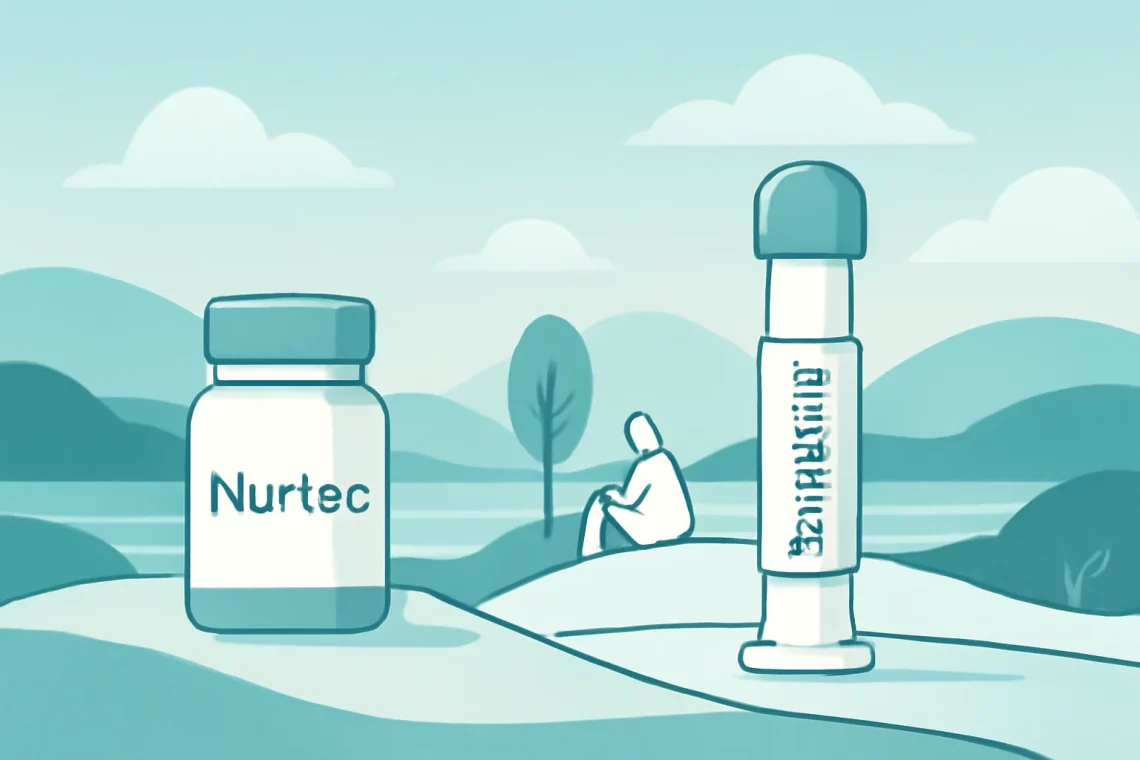
Nurtec vs Emgality: A Comprehensive Comparison of Migraine Treatments
Migraine is a debilitating condition that affects millions of individuals worldwide, often leading to significant disruptions in daily life. As awareness of migraine’s impact grows, so does the demand for effective treatments. Two medications that have gained attention in recent years are Nurtec and Emgality. Both options are designed to assist those suffering from migraines, but they operate through different mechanisms and have unique properties.
Understanding the nuances between these two medications can empower patients to make informed choices about their treatment plans. Factors such as onset of relief, duration of action, side effects, and the frequency of administration play a crucial role in determining which medication may be more suitable for a particular individual. As we navigate the complexities of migraine management, it is essential to delve into the specifics of Nurtec and Emgality, exploring their effectiveness, indications, and potential drawbacks.
By examining these medications closely, patients and healthcare providers can engage in meaningful discussions that lead to tailored treatment strategies, ultimately improving the quality of life for those affected by migraines.
Understanding Nurtec
Nurtec, also known by its generic name rimegepant, is a medication specifically designed for the acute treatment of migraine attacks. It belongs to a class of drugs known as CGRP (calcitonin gene-related peptide) receptor antagonists. CGRP is a neuropeptide that plays a critical role in migraine pathophysiology by promoting vasodilation and inflammation during a migraine attack. By inhibiting the action of CGRP, Nurtec effectively reduces the severity and duration of migraine attacks.
One of the key benefits of Nurtec is its rapid onset of action. Clinical studies have shown that many patients experience relief within an hour of taking the medication, making it a viable option for those seeking swift relief from debilitating migraine symptoms. Additionally, Nurtec is taken in an orally dissolving tablet form, which can be convenient for patients who may have difficulty swallowing pills during a migraine episode.
Another important aspect of Nurtec is its dual functionality. Not only does it treat acute migraine attacks, but it has also been approved for the preventive treatment of episodic migraines, allowing patients to manage their condition more effectively. This dual use can simplify treatment regimens and enhance patient adherence to their prescribed therapy.
Despite its advantages, Nurtec is not without potential side effects. Common side effects may include nausea, abdominal pain, and fatigue. Patients should be aware of these possibilities and discuss any concerns with their healthcare provider. Furthermore, while Nurtec can be beneficial for many, it may not be suitable for individuals with certain medical conditions or those taking specific medications, making it essential to have a thorough medical assessment prior to starting treatment.
In summary, Nurtec offers a promising option for migraine management, particularly for those seeking quick relief and the added benefit of preventive treatment. As with any medication, it is crucial for patients to work closely with their healthcare providers to determine if Nurtec is the right choice for their individual needs.
Exploring Emgality
Emgality, or galcanezumab, is another medication that has emerged as a significant player in the field of migraine treatment. Like Nurtec, Emgality is a CGRP receptor antagonist, but it is primarily used for the preventive treatment of migraines. This makes it particularly appealing for patients who experience frequent migraine attacks and are looking for a long-term strategy to reduce their occurrence.
One of the notable features of Emgality is its administration method. The medication is delivered via a subcutaneous injection, typically once a month after an initial loading dose. This monthly schedule can be advantageous for patients who prefer not to take daily oral medications, as it allows for a more manageable treatment plan.
Clinical studies have demonstrated that Emgality can significantly reduce the frequency of migraine days in patients, leading to fewer disruptions in daily activities. Many patients report a noticeable improvement in their quality of life after starting Emgality, as the medication helps to reduce the overall burden of migraines.
However, like any medication, Emgality comes with its own set of potential side effects. Some patients may experience injection site reactions, such as redness or swelling, while others may report headaches or nausea. It is essential for patients to discuss these possibilities with their healthcare provider to ensure they are adequately informed before starting treatment.
Additionally, Emgality’s long-term safety profile continues to be monitored, and patients should be aware of any new information that may arise regarding its use. As with all migraine treatments, it is essential for individuals to work closely with their healthcare provider to tailor their treatment plans to their specific needs.
In conclusion, Emgality presents a viable option for those seeking preventive migraine treatment. Its unique delivery method and established efficacy in reducing the frequency of migraine attacks make it an attractive choice for many patients. Collaborative discussions with healthcare providers can help individuals determine if Emgality aligns with their treatment goals and lifestyle preferences.
Comparing Nurtec and Emgality
When it comes to choosing between Nurtec and Emgality, there are several factors to consider. Both medications target the same underlying mechanism of migraine pathology, but they differ significantly in their usage and administration. Understanding these differences can aid patients and healthcare providers in making an informed decision.
One major distinction is the intended use of each medication. Nurtec can be used for both acute treatment and preventive measures, offering flexibility in its application. This allows patients to manage their migraines more dynamically, addressing immediate symptoms while also working towards long-term prevention. On the other hand, Emgality focuses solely on the preventive aspect, making it a better fit for individuals who experience frequent migraines and are looking for a proactive approach.
The onset of action is another critical factor to consider. Nurtec is known for its rapid relief, with many patients experiencing symptom alleviation within an hour of ingestion. This quick action can be beneficial for those who require immediate relief during an attack. In contrast, Emgality takes longer to show effects, as it is designed for long-term use rather than immediate symptom relief. Patients should weigh their individual needs for acute versus preventive treatment when deciding between the two.
In terms of administration, Nurtec’s orally dissolving tablet may be more convenient for some patients, especially those who dislike injections. Emgality, while requiring a monthly injection, may appeal to individuals who prefer a less frequent dosing schedule and find it manageable to administer.
Cost and insurance coverage may also play a vital role in the decision-making process. Patients are encouraged to explore their insurance plans and discuss potential costs with their healthcare providers to determine which medication is more feasible for their budget.
In summary, both Nurtec and Emgality offer unique advantages and considerations for migraine management. The choice between them should be based on individual preferences, treatment goals, and discussions with healthcare providers to ensure the best possible outcomes.
Conclusion
In conclusion, both Nurtec and Emgality have established themselves as important tools in the management of migraines, each offering distinct benefits tailored to varying patient needs. Nurtec stands out for its dual functionality in treating acute attacks and providing preventive care, while Emgality excels in its targeted approach to long-term migraine prevention.
As migraine management continues to evolve, it is crucial for patients to engage in open dialogue with their healthcare providers. Individualized treatment plans that consider personal medical history, lifestyle, and specific migraine patterns can lead to improved outcomes and a better quality of life.
Ultimately, whether one chooses Nurtec, Emgality, or another treatment option, the goal remains the same: to alleviate the burden of migraines and empower individuals to lead fulfilling lives despite this challenging condition.
*Disclaimer: This article is not intended as medical advice. Always consult with a healthcare professional for any medical concerns or before starting a new treatment.*




